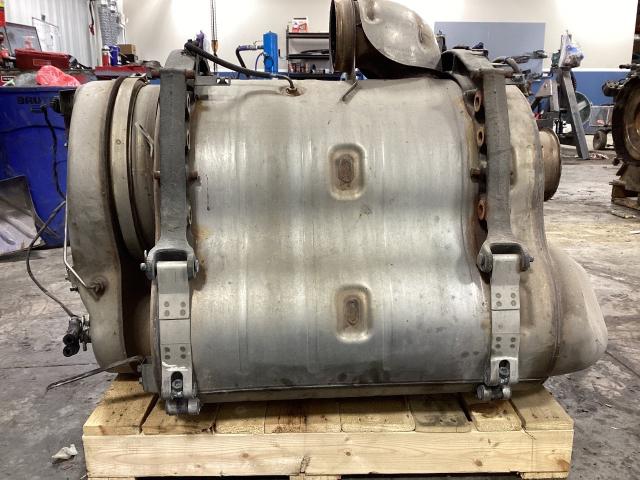
DPF Services
The (DPF) controls emissions by trapping soot and particles from escaping. Regular maintenance at a truck repair shop is key, because it keeps your truck running smoothly. It also helps you meet environmental standards. So you can keep the community clean.
To start, you should have it cleaned by a professional and regenerate the DPF often. Otherwise, it can cause the filter to be clogged. That will then lead to the filter causing higher exhaust pressure. This, in turn reduces engine power and increases fuel use, as well as possibly causing the truck to go into derate. As a result, you will face higher repair costs and more downtime, causing more and more problems down the road.
In addition, carry out your routine checks and diagnostics. These steps help you catch problems early. So you can fix the issues quickly, save money, and avoid delays. Therefore, your trucks will remain compliant with emission standards, and you can save money and time.
DPF Solutions

Check-Up
Do regular inspections at our truck repair shop to find potential DPF issues. Frequent check-ups ensure the system works correctly and help prevent costly repairs down the line.

Regeneration
Regen is crucial for maintaining efficiency. There are three types: Passive, Active, & Forced regen.
Read More
1. Passive Regen: Occurs by itself during driving when exhaust temperatures burn off soot.
2. Active Regen: Triggered by the ECU to raise exhaust temperatures and burn off soot.
3. Forced Regen: Done manually if the DPF is severely clogged and other methods fail.

Replacement
If the DPF is damaged or worn out, it may need to be replaced with a new unit. This is crucial to maintaining engine performance and meeting emission standards.

Cleaning
Choose from two main methods for DPF cleaning: Manual Cleaning, or On Truck Cleaning. Manual gives a deeper clean, while on truck cleaning is quicker.
Read More
1. Manual Cleaning: Remove the DPF and use specialized cleaning to clear soot and debris.
2. On Truck Cleaning: Clean the DPF using chemicals or high-pressure methods without removing it, saving time and effort.

DPF & DOC Baking
DPF cleaning is crucial to restoring performance. When regular regen and cleaning don’t work, thermal baking removes built-up ash and soot.
Read More
1. Removal & Inspection: The DPF and DOC are taken off the truck and checked for damage.
2. High-Temperature Bake: The filters are placed in an industrial oven at 1000°F+ to burn off trapped ash.
3. Air Pulse Cleaning: Compressed air is used to remove leftover debris before reinstalling.

Full Emissions Overhaul
A failing emissions system can cause limp mode, warning lights, and performance loss. A full overhaul ensures proper function.
Read More
1. System Diagnostics: Checking DPF, DOC, SCR, sensors, and injectors for faults.
2. Deep Cleaning & Repairs: Replacing clogged filters, fixing leaks, and ensuring proper airflow.
3. ECM Reset & Calibration: Ensuring the truck’s computer recognizes new parts and optimizes efficiency.
What You Should Know
WHAT’S INCLUDED IN A DPF SERVICE:
- Full system inspection (DPF, DOC, sensors, and lines)
- Regeneration (passive, active, or forced if needed)
- Manual or thermal cleaning depending on condition
- Filter flow and pressure testing after service
WHEN SHOULD YOU SERVICE YOUR DPF:
- Every 200,000–250,000 miles or sooner if warning lights come on
- If you’re experiencing frequent regens or low power
- When fuel economy drops or you smell strong exhaust fumes
- After engine repairs involving fuel or emissions
WHY IT MATTERS TO SERVICE YOUR DPF:
- Prevents costly damage to the DPF and engine
- Reduces downtime by avoiding derate or limp mode
- Improves fuel efficiency and performance
- Keeps you compliant with emissions laws
